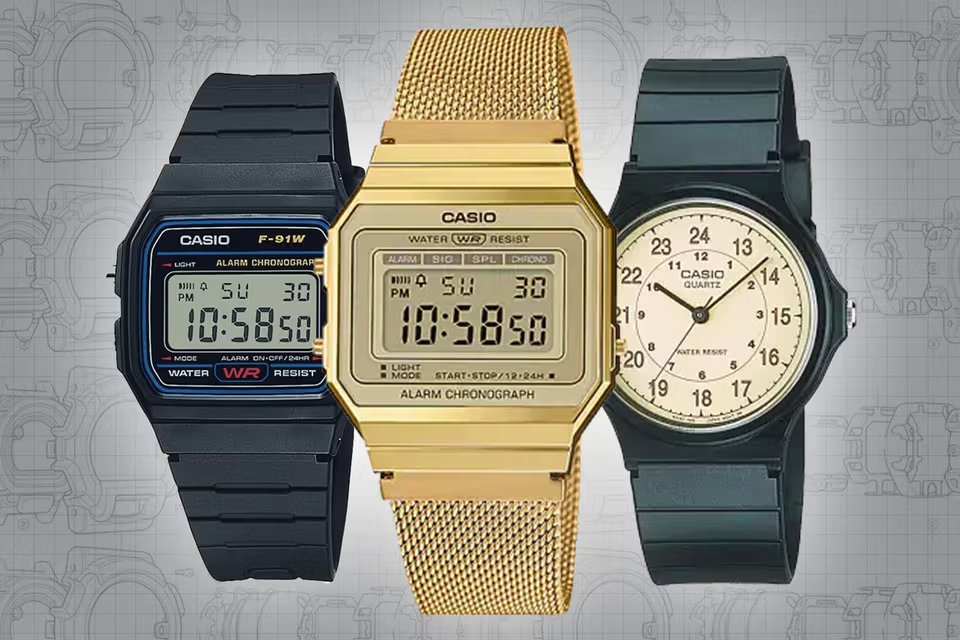In the pantheon of global electronics brands, few names evoke such a specific, yet wildly diverse, set of images. For some, it’s the first digital watch on a child’s wrist. For others, it’s the synth beat of an 80s pop hit or the frantic graphing before a calculus exam. This is the domain of Casio—a company that has, for seven decades, operated under a radically simple yet profound principle: create tools that are utterly useful, incredibly durable, and surprisingly affordable.
While other companies chase minimalist aesthetics or bleeding-edge specs, Casio has carved out a legacy by perfecting the art of timeless utility. It is a brand less about aspiration and more about empowerment.
The Foundation: The Calculator That Started It All
The story begins not with a watch, but with a calculator. In 1957, Casio released the Model 14-A, the world’s first all-electric compact calculator. It was a mammoth desk machine, but it established the company’s core engineering DNA: to take complex technology and make it accessible. This ethos would become the throughline for every product they ever made.
The Icon: The Birth of the “Beep”
In 1974, Casio did it again with the Casiotron. It wasn’t just a digital watch; it was the first automatic calendar watch that could distinguish between 28, 30, and 31-day months, even accounting for leap years. But the true cultural earthquake arrived in 1983: the F-91W.
The F-91W wasn’t designed to be a style icon. It was designed to be perfect. For a minuscule price, it offered a stopwatch, alarm, light, and water resistance, all powered by a battery that often outlived the wearer. It was lightweight, comfortable, and virtually indestructible. Its unassuming design became its greatest strength, making it a blank canvas for everyone from presidents to punk rockers, soldiers to students. It was democracy on a resin strap.
The Workhorse: The Instruments of Achievement
Walk into any high school math class and listen. That chorus of clicks and beeps isn’t just noise; it’s the sound of learning. The Casio graphing calculator, particularly the FX- series and the legendary graphing models, became the unsung hero of STEM education. They were powerful enough to handle complex equations but simple enough for a teenager to learn. Casio didn’t just sell calculators; it sold confidence. It built the tools that helped build futures.
The Sound: The Rhythm of a Generation
If your watch can tell time, why can’t your keyboard play music? This seemingly quirky question led to the Casio Casiotone keyboards in 1980. With their preset rhythms and cheesy synth tones, they were dismissed by purists. But for bedroom musicians and budding producers, they were a gateway. The distinct, lo-fi sound of the MT-40 and SA series became the secret ingredient in early hip-hop and pop tracks, most famously on Trio’s “Da Da Da” and countless 80s hits. Casio, once again, had democratized a technology, putting a recording studio within reach of anyone.
The G-Shock: The Philosophy Forged in Toughness
The legend is now horological folklore: engineer Kikuo Ibe, driven by the memory of breaking a treasured watch, set out to create the world’s toughest timepiece. After 200 prototypes and a dramatic test involving throwing a watch from a bathroom window, the G-Shock was born in 1983.
G-Shock is more than a line of watches; it is the ultimate expression of Casio’s philosophy. It is a product where every single component—the case, the band, the module, the buttons—is engineered around a single function: absolute survival. It is utility as its own art form. The G-Shock didn’t just find a market; it created a cult of durability that appeals to soldiers, surgeons, skateboarders, and anyone who values resilience in an increasingly fragile world.
The Modern Paradox: Retro-Futurism
In a fascinating twist, Casio’s greatest strength in the 21st century is its past. In an era of smartwatches that need nightly charging and constant updates, the humble F-91W and G-Shock offer a rebellious alternative: permanent functionality. They are a slice of pure, dependable utility in a complicated digital life.
This has sparked a “retro-futurist” revival.Casio has wisely leaned into this, re-releasing classic models while still incorporating modern tech like solar power and Bluetooth connectivity, proving that utility never goes out of style.
Conclusion: The Beauty of Usefulness
Casio’s uniqueness doesn’t lie in a single revolutionary product. It lies in a consistent, unwavering worldview. While others sell dreams, Casio sells capability. They are the architects of the everyday, the champions of the durable, and the quiet enablers of creativity, learning, and adventure.

